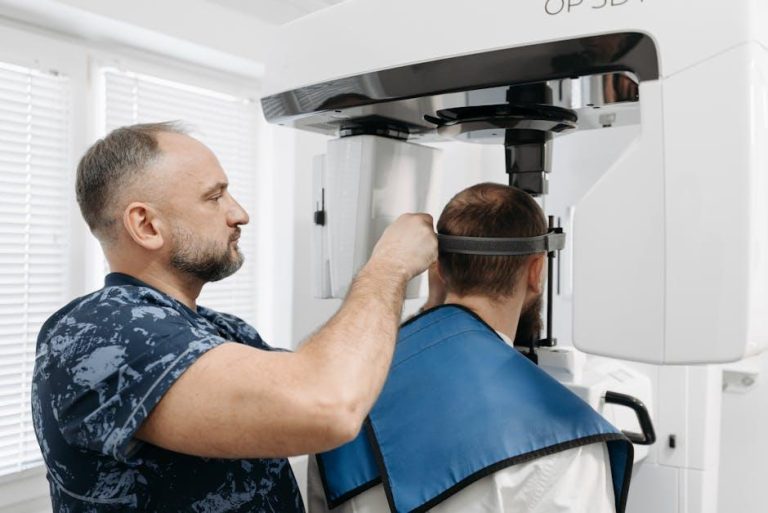
3D Scans & Future Dental Tech with Zelko Relic, Align Technology – TechInformed
The dental industry is undergoing a digital revolution, and at the forefront of this transformation are cutting-edge technologies like 3D scans and innovations pioneered by leaders such as Zelko Relic with Align Technology. These advancements are reshaping how dental professionals diagnose, treat, and manage patient care with unprecedented accuracy and efficiency.
Understanding 3D Scans in Dentistry
3D scanning technology involves capturing a precise digital replica of a patient’s oral anatomy using specialized imaging devices. Unlike traditional X-rays or impressions, 3D scans provide detailed, realistic representations of teeth, gums, and jaw structures in three dimensions.
How 3D Scans Work
Modern 3D intraoral scanners use structured light or laser technology to map the contours inside the mouth. The scanner quickly collects thousands of data points, which software then stitches together into a highly detailed 3D model. This digital model can be manipulated, measured, and analyzed with remarkable accuracy.
The Role of Zelko Relic and Align Technology
Zelko Relic, a visionary in digital dentistry, has collaborated closely with Align Technology, the company behind Invisalign and advanced dental imaging tools, to push the limits of 3D scanning. Together, they are revolutionizing traditional workflows by integrating:
- Advanced 3D intraoral scanners
- AI-powered diagnostic tools
- Cloud-based treatment planning software
Align Technology’s growing portfolio of products leverages this technology to improve not only orthodontic treatments but also prosthodontics, restorative and implant dentistry, setting new standards for patient outcomes.
Benefits of 3D Scans in Modern Dentistry
Adopting 3D scan technology offers dental clinics and patients numerous advantages, including:
- Accuracy: Eliminates the errors often seen with traditional molds.
- Comfort: Non-invasive and faster procedures with less discomfort.
- Speed: Accelerated diagnosis and treatment planning.
- Visualization: Enhanced patient communication with interactive 3D models.
- Cost-efficiency: Reduces need for repeat visits and material wastage.
Future Dental Technologies Inspired by 3D Scans
Looking ahead, the integration of 3D scans with artificial intelligence (AI), machine learning, and augmented reality (AR) is shaping the future of dental care. These future dental technologies include:
- AI-assisted Diagnostics: Automated detection of cavities, gum disease, and other anomalies by analyzing 3D scan data efficiently.
- Personalized Treatment Plans: Customized care based on patient-specific digital models enhancing efficacy.
- AR-guided Surgeries: Real-time overlays during dental procedures improving precision and outcomes.
- Remote Monitoring and Tele-dentistry: Patients and doctors collaborating without physical visits using digital scan sharing.
Case Study: Transforming Orthodontics with Align Technology
One illustrative example is how Align Technology’s Invisalign system has incorporated 3D scans to streamline orthodontic care:
| Aspect | Traditional Orthodontics | Invisalign + 3D Scans |
|---|---|---|
| Impression Method | Physical molds — messy and uncomfortable | Digital scans — quick and painless |
| Treatment Planning | Manual analysis, longer wait times | Cloud-based simulation, instant visualization |
| Patient Comfort | Frequent adjustments, visible metal brackets | Removable clear aligners, fewer visits |
| Outcome Accuracy | Variable, depending on impressions | Predictable thanks to precise 3D models |
Practical Tips for Dentists Implementing 3D Scan Technology
Switching to 3D scanning technology can seem daunting for dental professionals, but following these tips can ease the transition:
- Invest in Training: Ensure all staff members become proficient with new scanning devices through workshops and webinars.
- Partner with Experts: Collaborate with companies like Align Technology and professionals like Zelko Relic for tailored solutions.
- Start Small: Introduce 3D scanning in specific areas such as orthodontics or prosthetics before full integration.
- Emphasize Patient Education: Use digital models to explain procedures and build patient trust.
- Maintain Updated Software: Keep scanning and planning software regularly updated for best results and security.
Firsthand Experience: What Patients Say
Patients who have experienced 3D scan-based dental care consistently report higher satisfaction due to:
- Minimal discomfort during scans
- Better understanding of their treatment through interactive visuals
- Reduced treatment time and more predictable outcomes
Testimonials emphasize that the digital approach feels more modern, less invasive, and overall more reassuring when compared to traditional methods.
Conclusion
The integration of 3D scans into dental workflows, championed by visionaries like Zelko Relic and innovative companies such as Align Technology, marks a major leap in the future of dental care. This technology not only enhances accuracy and patient comfort but also opens doors to groundbreaking innovations like AI diagnostics and AR-guided treatments. For dental professionals and patients alike, embracing this future-focused approach will redefine the way smiles are crafted and cared for.
As digital dentistry continues to evolve, those who adopt 3D scanning and related technologies will be best positioned to offer superior care and maintain a competitive edge in the rapidly changing dental industry landscape.


